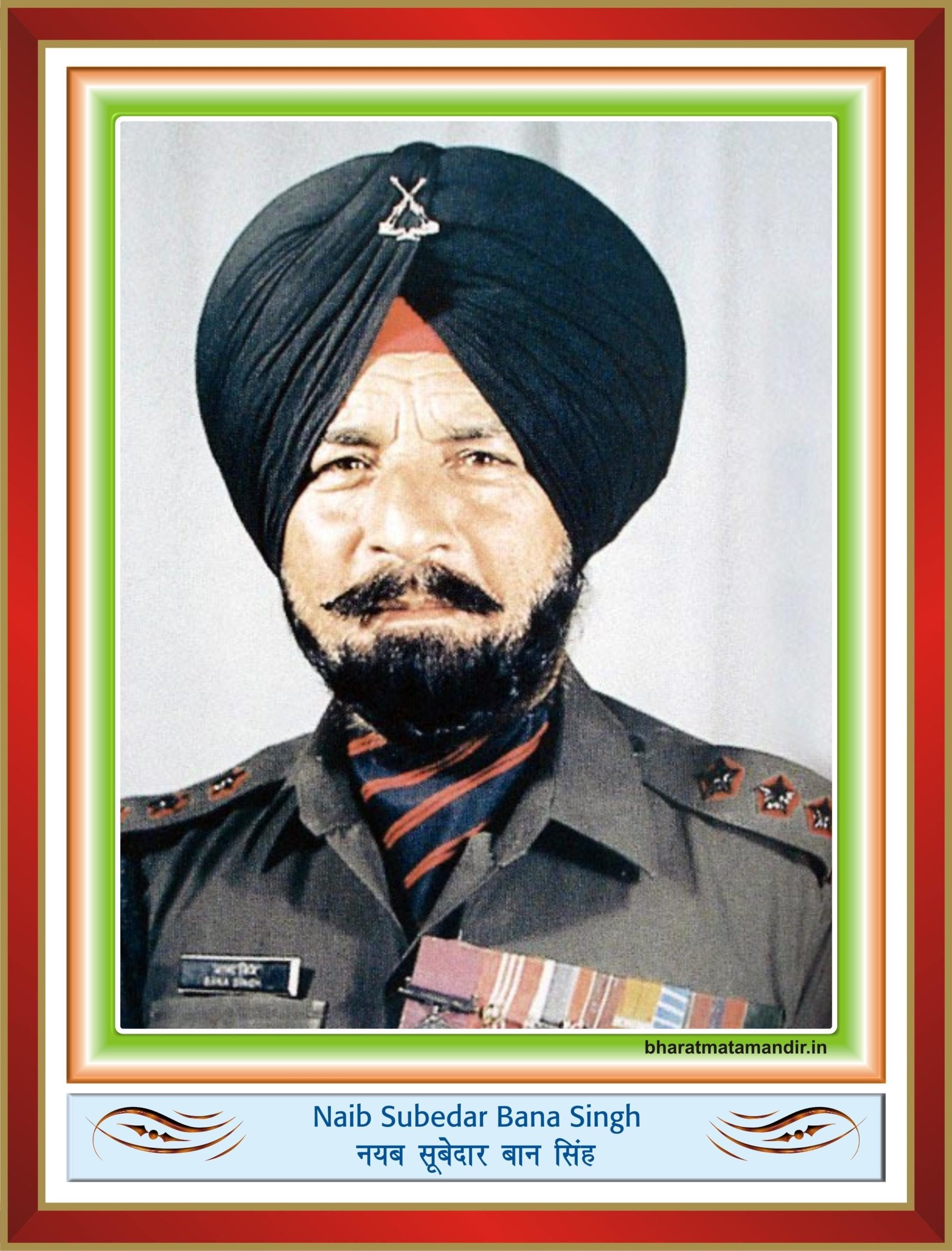

Captain Bana Singh, was born on 6 January 1949 at Kadyal in Jammu and Kashmir. He enrolled in the Indian Army on 6 January 1969 into the 8th Jammu & Kashmir Light Infantry (JAK LI) Regiment. He was awarded the Param Vir Chakra, the highest wartime gallantry medal in India.
During the Siachen Conflict of June 1987, the 8th Jammu & Kashmir Light Infantry (JAKLI), was deployed to the Siachen Glacier area. It was then found that a large number of Pakistani infiltrators had intruded in the Siachen Glacier. The ejection of these infiltrators was considered difficult but necessary and a special task force was constituted for the purpose. Bana Singh was a Naib Subedar then, posted on the Glacier. Naib Subedar Singh volunteered to join this force[1].
The Pakistani intrusion had taken place at a height of 6450 metres, one of the highest peaks in the Siachen Glacier area. From this feature the Pakistanis could snipe at Indian army positions since the height gave a clear view of the entire saltoro range and siachen glacier. The Pakistanis called this post ‘Quaid post’ after their founder Quaid-e-azam Md Ali Jinnah. The enemy post was virtually an impregnable glacier fortress with ice walls, 457 metres high, on either side. Operation Rajiv, named after 2nd Lt Rajiv Pande VrC, was launched to evict the Pakistanis from that post. Naib Subedar Bana Singh led his men through an extremely difficult and hazardous route, climbing a height of 1500 meters in near darkness in a snowstorm. He inspired them by his indomitable courage and leadership. He and his men crawled and closed in on the adversary. Lobbing hand-grenades, charging with a bayonet and moving from trench to trench, he cleared the post of all intruders. All together 6 Pakistani soldiers were killed, 3 or 4 of them were bayoneted in hand to hand battle at a height of 21,000 ft.
Naib Subedar Bana Singh was awarded the Param Vir Chakra, the highest wartime gallantry medal in India, for conspicuous bravery and leadership under most adverse conditions. The peak which he captured was renamed Bana Top in his honour. At the time of the Kargil War, he was the only PVC awardee who was still serving in the Army
Captain Bana Singh, was born on 6 January 1949 at Kadyal in Jammu and Kashmir. He enrolled in the Indian Army on 6 January 1969 into the 8th Jammu & Kashmir Light Infantry (JAK LI) Regiment. He was awarded the Param Vir Chakra, the highest wartime gallantry medal in India.
During the Siachen Conflict of June 1987, the 8th Jammu & Kashmir Light Infantry (JAKLI), was deployed to the Siachen Glacier area. It was then found that a large number of Pakistani infiltrators had intruded in the Siachen Glacier. The ejection of these infiltrators was considered difficult but necessary and a special task force was constituted for the purpose. Bana Singh was a Naib Subedar then, posted on the Glacier. Naib Subedar Singh volunteered to join this force[1].
The Pakistani intrusion had taken place at a height of 6450 metres, one of the highest peaks in the Siachen Glacier area. From this feature the Pakistanis could snipe at Indian army positions since the height gave a clear view of the entire saltoro range and siachen glacier. The Pakistanis called this post ‘Quaid post’ after their founder Quaid-e-azam Md Ali Jinnah. The enemy post was virtually an impregnable glacier fortress with ice walls, 457 metres high, on either side. Operation Rajiv, named after 2nd Lt Rajiv Pande VrC, was launched to evict the Pakistanis from that post. Naib Subedar Bana Singh led his men through an extremely difficult and hazardous route, climbing a height of 1500 meters in near darkness in a snowstorm. He inspired them by his indomitable courage and leadership. He and his men crawled and closed in on the adversary. Lobbing hand-grenades, charging with a bayonet and moving from trench to trench, he cleared the post of all intruders. All together 6 Pakistani soldiers were killed, 3 or 4 of them were bayoneted in hand to hand battle at a height of 21,000 ft.
Naib Subedar Bana Singh was awarded the Param Vir Chakra, the highest wartime gallantry medal in India, for conspicuous bravery and leadership under most adverse conditions. The peak which he captured was renamed Bana Top in his honour. At the time of the Kargil War, he was the only PVC awardee who was still serving in the Army